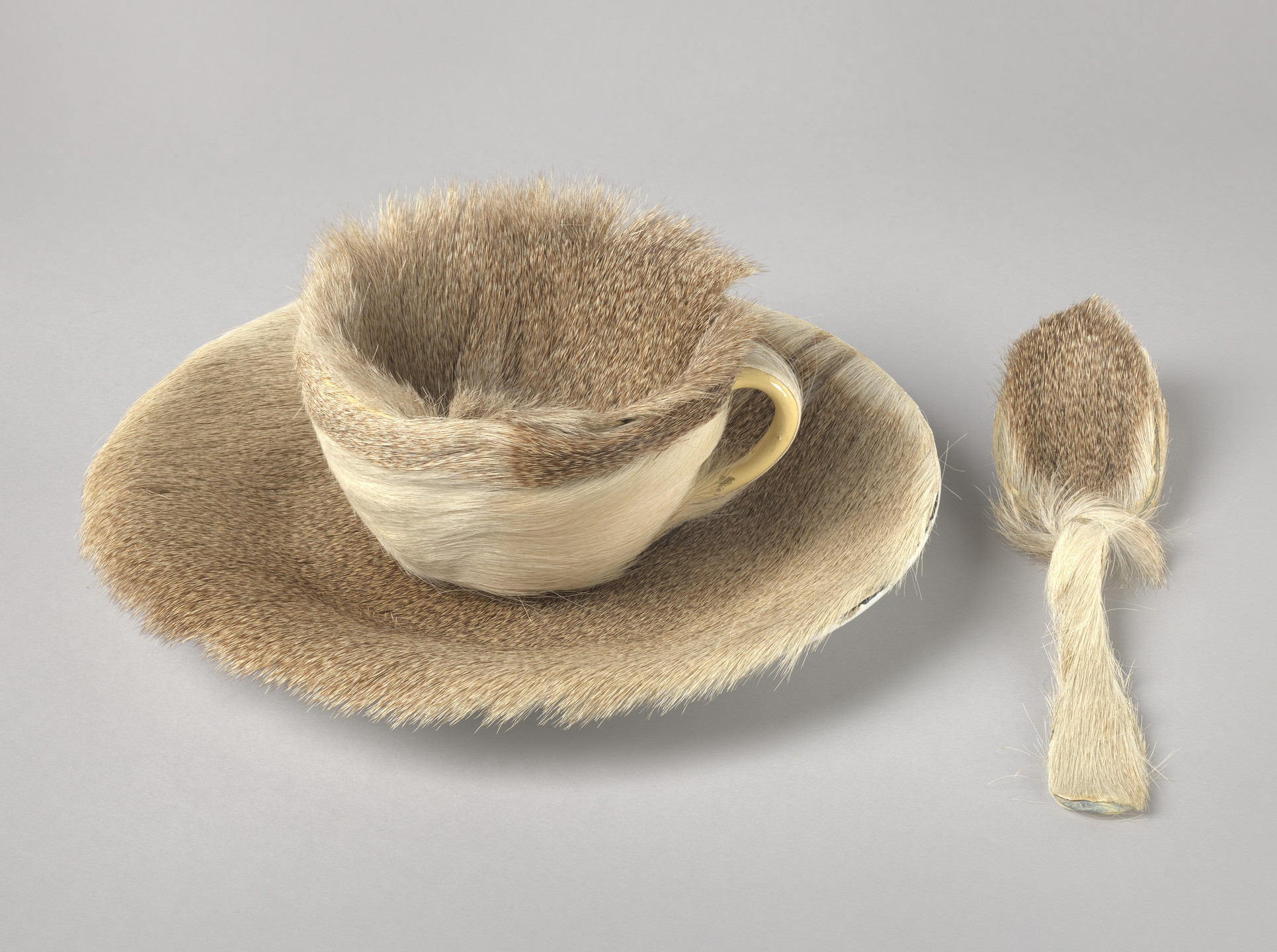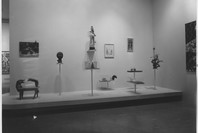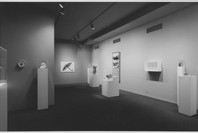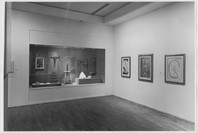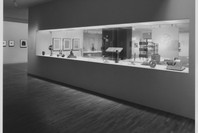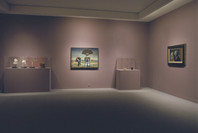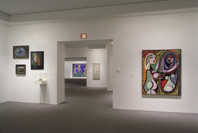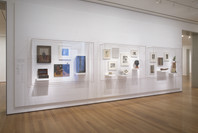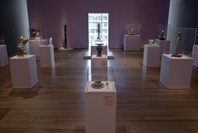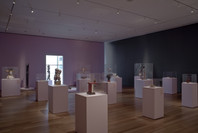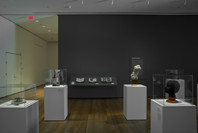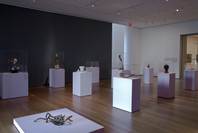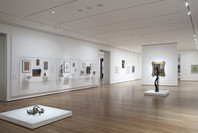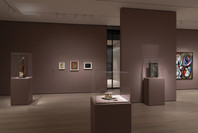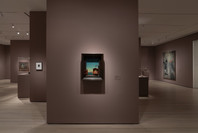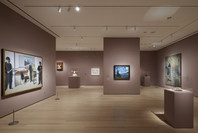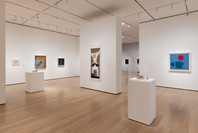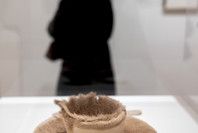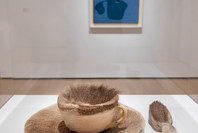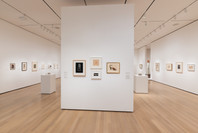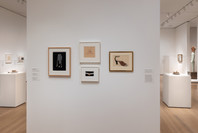It began with a joke over lunch. In 1936, Meret Oppenheim was at a Paris café with Dora Maar and Pablo Picasso, who noticed the fur-lined, polished metal bracelet she was wearing and joked that anything could be covered with fur. “Even this cup and saucer,” Oppenheim replied and, carrying the merriment further, called out, “Waiter, a little more fur!” Her devilish imagination duly sparked, the artist went to a department store not long after this meal, bought a white teacup, saucer, and spoon, wrapped them in the speckled tan fur of a Chinese gazelle, and titled this ensemble Object. In doing so, she transformed items traditionally associated with decorum and feminine refinement into a confounding Surrealist sculpture. Object exemplifies the poet and founder of Surrealism André Breton’s argument that mundane things presented in unexpected ways had the power to challenge reason, to urge the inhibited and uninitiated (that is, the rest of society) to connect to their subconscious—whether they were ready for it or, more likely, not.
While Oppenheim was not the only artist bringing everyday things into unlikely alliance in the 1930s, her fur-covered teacup is considered to be among the quintessential Surrealist objects. It caused a sensation when it was introduced to the public in 1936, first in Paris, at the inaugural exhibition of Surrealist objects organized by Breton, and then in New York, at The Museum of Modern Art’s show Fantastic Art, Dada and Surrealism. “The fur-lined-cup school of art,” ran a headline of the day, capturing the mixture of bemusement, offense, shock, and fascination Object provoked. Though many viewers could not comprehend how or why it constituted a work of art, by 1946, The Museum of Modern Art acquired the work.
“Art […] has to do with spirit, not with decoration,” Oppenheim once wrote, and a work as small and economical as Object has such outsized spirit because fur combined with a teacup evokes such a surprising mix of messages and associations. The fur may remind viewers of wild animals and nature, while the teacup could suggest manners and civilization. With its pelt, the teacup becomes soft, rounded, and highly tactile. It seems attractive to the touch, if not, on the other hand, to the taste: Imagine drinking from it, and the physical sensation of wet fur filling the mouth.
Imagine drinking from this cup! To make this sculpture, Oppenheim bought a teacup, saucer, and spoon from a store and covered them with gazelle fur. By doing this, she changed these everyday objects into a work of art. Look out for how other artists have transformed regular things into art.
Kids label from 2019, updated in 2023
Oppenheim’s fur-lined teacup is perhaps the single most notorious Surrealist object. Its subtle perversity was inspired by a conversation between Oppenheim, Pablo Picasso, and the photographer Dora Maar at a Paris café. Admiring Oppenheim’s fur-trimmed bracelets, Picasso remarked that one could cover just about anything with fur. “Even this cup and saucer,” Oppenheim replied.
In the 1930s, many Surrealist artists were arranging found objects in bizarre combinations that challenged reason and summoned unconscious and poetic associations. *Object*—titled Le Déjeuner en fourrure (Lunch in fur) by the Surrealist leader André Breton—is a cup-and-saucer set that was purchased at a Paris department store and lined with the pelt of a Chinese gazelle. The work highlights the specificities of sensual pleasure: fur may delight the touch, but it repels the tongue. And a cup and spoon, of course, are made to be put in the mouth.
Following his inclusion of the work in MoMA’s 1936–37 exhibition Fantastic Art, Dada, Surrealism, Alfred H. Barr, Jr., the Museum’s director, remarked, “Few works of art in recent years have so captured the popular imagination.... The ‘fur-lined tea set’ makes concretely real the most extreme, the most bizarre improbability. The tension and excitement caused by this object in the minds of tens of thousands of Americans have been expressed in rage, laughter, disgust or delight.”
Publication excerpt from MoMA Highlights: 375 Works from The Museum of Modern Art, New York (New York: The Museum of Modern Art, 2019)
